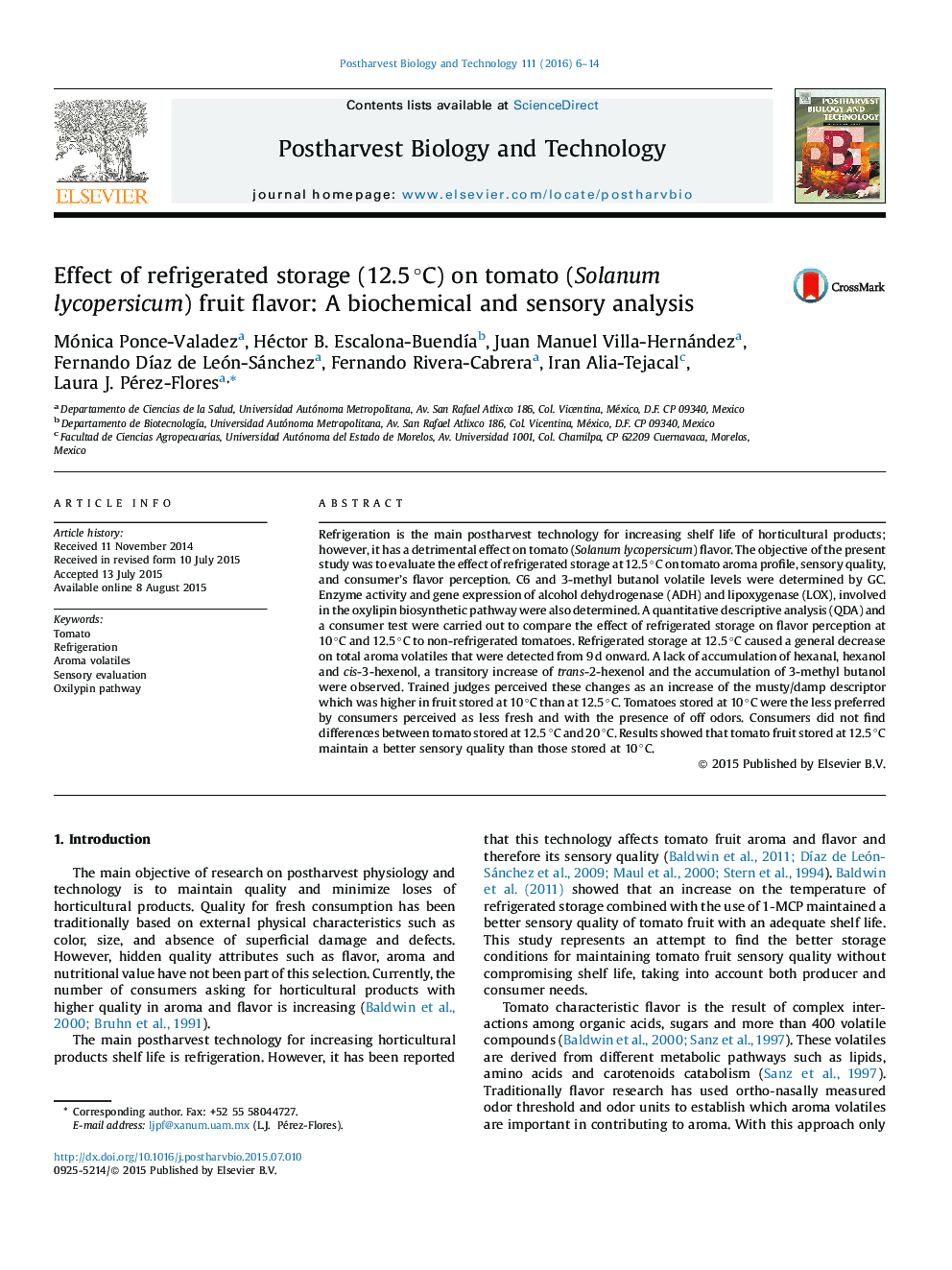| Article ID | Journal | Published Year | Pages | File Type |
|---|---|---|---|---|
| 4517849 | Postharvest Biology and Technology | 2016 | 9 Pages |
•Refrigerated storage effect on sensory quality and consumer’s perception was analyzed.•Refrigerated storage at 12.5 °C did not affect aldehyde/alcohol ratio.•PCA showed that the highest variation was in aroma volatiles.•Storage at 12.5 ° C maintained better sensory quality than storage at 10 °C.
Refrigeration is the main postharvest technology for increasing shelf life of horticultural products; however, it has a detrimental effect on tomato (Solanum lycopersicum) flavor. The objective of the present study was to evaluate the effect of refrigerated storage at 12.5 °C on tomato aroma profile, sensory quality, and consumer’s flavor perception. C6 and 3-methyl butanol volatile levels were determined by GC. Enzyme activity and gene expression of alcohol dehydrogenase (ADH) and lipoxygenase (LOX), involved in the oxylipin biosynthetic pathway were also determined. A quantitative descriptive analysis (QDA) and a consumer test were carried out to compare the effect of refrigerated storage on flavor perception at 10 °C and 12.5 °C to non-refrigerated tomatoes. Refrigerated storage at 12.5 °C caused a general decrease on total aroma volatiles that were detected from 9 d onward. A lack of accumulation of hexanal, hexanol and cis-3-hexenol, a transitory increase of trans-2-hexenol and the accumulation of 3-methyl butanol were observed. Trained judges perceived these changes as an increase of the musty/damp descriptor which was higher in fruit stored at 10 °C than at 12.5 °C. Tomatoes stored at 10 °C were the less preferred by consumers perceived as less fresh and with the presence of off odors. Consumers did not find differences between tomato stored at 12.5 °C and 20 °C. Results showed that tomato fruit stored at 12.5 °C maintain a better sensory quality than those stored at 10 °C.
